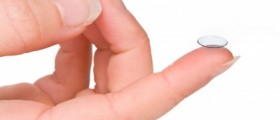
Astigmatism is an eye condition, to be more precise refractive error that typically features with blurred vision. The condition affects both, children and adults, it is considered common and definitely is not contagious. In majority of cases astigmatism is congenital (present at birth). However, it can also develop after an eye operation or some kind of injury to the eye. There are two most common types of astigmatism: corneal astigmatism and lenticular astigmatism.
Causes of Astigmatism
Corneal astigmatism develops as a consequence of improper shape of the cornea. Namely, if the cornea is not curved flawlessly (e.g. if one half is flatter/ steeper comparing to the other) the light will not refract adequately and the image formed on the retina will be imperfect. It is estimated that children whose both parents have astigmatism are at a higher risk to develop astigmatism themselves. Furthermore, corneal astigmatism can be connected with prematurity. And finally, keratoconus is another disorder associated with corneal astigmatism.
Lenticular astigmatism develops due to improper curvature of the lens. It generally affects people suffering from diabetes.
Clinical Characteristics of Astigmatism
The two main characteristics of astigmatism are blurred and distorted vision. The person may also suffer from photophobia (increased sensitivity to light), headaches and there is evident excessive squinting. People suffering from astigmatism suffer more from eye strain particularly if their eyes have to be focused for long periods (for example while reading or working at the computer).
Diagnosing Astigmatism
The condition is diagnosed by an ophthalmologist, optometrist or orthoptist. There are certain tests and examinations that are used in diagnosing astigmatism. They include visual acuity test, astigmatic dial and keratometer.
Treatment Options for Astigmatism
In case of mild astigmatism there is no need for treatment. However, moderate and severe forms require proper correction.
Corrective lenses represent an excellent treatment option for astigmatism. They bend the income light rays in a way that actually compensate for anatomical error. These lenses are used either in a form of glasses or as contact lenses. Both of them are equally efficient.
Laser eye surgery is another treatment option for people suffering from astigmatism. Photorefractive keratectomy is a procedure during which the outer protective layer of the cornea is removed. The procedure is very painful and the vision recovers after up to a month. LASEK is another surgical procedure used in astigmatism. It is suitable for people with thin cornea. And finally, there is LASIK surgery. This is in site keratectomy during which a surgeon uses a device called a keratome and makes a thin and round hinged cut into the cornea.

















Your thoughts on this
Loading...